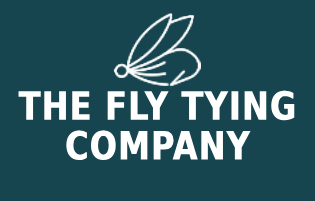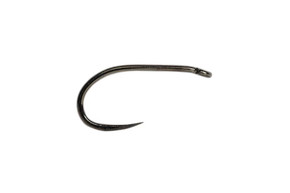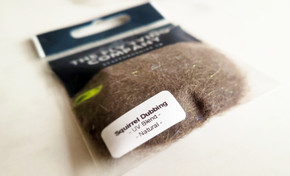Origin and History
The Elk Hair Caddis was created in the 1950s by American tier Al Troth in Pennsylvania. It was designed to imitate adult caddisflies sitting high on the surface. The distinctive wing, made from elk hair, provides both floatability and a lifelike profile. Since its invention, the pattern has become a cornerstone dry fly across the world and remains one of the most widely used caddis imitations for trout and grayling.
Materials
- Hook: Dry fly hook, sizes 12–18
- Thread: Brown or tan, 8/0
- Rib: Fine gold wire (optional, for reinforcement)
- Body: Tan, olive, or grey dubbing
- Hackle: Brown or ginger cock hackle
- Wing: Natural elk hair
Popular Variations
- Black Elk Hair Caddis – effective during darker caddis hatches
- Olive-bodied version – ideal for green sedge hatches
- Hi-vis version with fluorescent post for low light conditions
- CDC wing substitution for extra buoyancy
- Beadhead Elk Hair Caddis for sub-surface fishing
Step-by-Step Tying Guide
- Secure the hook in the vice and start your thread just behind the eye, winding back to the bend.
- Optional: Tie in fine gold wire at the bend to rib the fly later for durability.
- Apply dubbing to your thread and build a tapered body up towards the thorax.
- Tie in a cock hackle by the stem at the base of the dubbed body.
- Palmer the hackle forward in evenly spaced turns, securing with thread near the eye.
- Counter-wrap the gold wire rib forward through the hackle to reinforce, then tie off.
- Cut and stack a small bunch of elk hair, measure it so it extends just past the bend, and tie it in over the thorax as the wing.
- Trim the butts of the elk hair, secure with tight thread wraps, and whip finish.
- Add a drop of varnish to the head for extra durability.
Seasonality & Representation
The Elk Hair Caddis is most effective from late spring through autumn, coinciding with caddisfly hatches. It represents adult sedges and caddisflies resting or skittering across the water surface. Its buoyant design also makes it an excellent searching pattern when trout are feeding opportunistically on the top.
Tackle and Setup
- Rod: 8–9ft, 4–6wt
- Line: Floating line for surface presentations
- Leader: 9–12ft tapered, with 5X–6X tippet for smaller sizes
- Setup: Fish singly, or as part of a dry-dropper rig with a nymph below
Summary Table
| Aspect | Details |
|---|---|
| Origin | 1950s, Al Troth, USA |
| Best Seasons | Late Spring – Autumn |
| Represents | Adult caddisflies and sedges |
| Hook Sizes | 12–18 |
| Tackle Setup | 8–9ft rod, floating line, 9–12ft leader |












